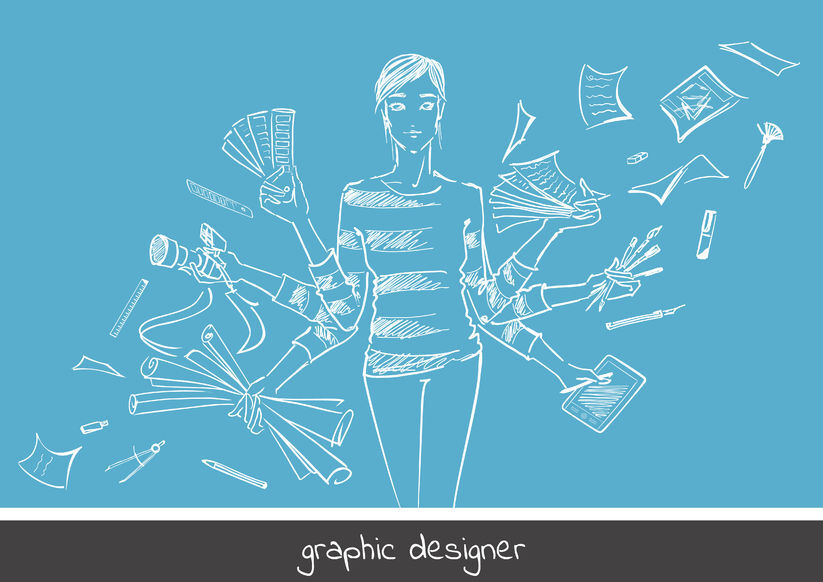Portfolio Perfection - How To Put Together A Portfolio That'll Get You Noticed
Posted over 9 years ago by Rebecca Thomas
Think of your portfolio as your shop window. A well laid out and designed shop window draws people in and creates interest.
A poorly designed one puts people off before you’ve even got through the door. The same applies to your portfolio: the more time and effort you dedicate to honing it, the higher are your chances for attracting potential employers.
Working with Creative Directors on a daily basis means that we have a pretty good idea about what they look for when reviewing candidates’ work, so we’ve distilled this into our top tips for fine-tuning your portfolio, getting noticed and being remembered.
Good portfolios are always evolving, you need to be constantly on the lookout to ensure that it’s showcasing your best work, even if you’re not actively looking for a role. Nothing is permanent and nor should your portfolio be. One of the best quotes we’ve read over the years encapsulates this point perfectly: “You should never consider your portfolio finished.
You should always be dissatisfied with it. Your book requires endless work and few things are more important. And no matter how successful you become, this never changes."
Format
These days a lot of designers opt for both an on and offline version of their portfolio. If you’re a graphic designer there’s still something about the physicality of a printed folio that hits home - but don’t forget, this will also need to be duplicated to be sent out to prospective employers electronically in pdf format. No matter what your creative specialization is, digital portfolios are increasingly popular and there is a myriad of options out there for creating a beautiful online showcase. These range from personalized websites, whether this is a simple, templated site using hosting platforms like Wordpress or Squarespace, or a custom built site. If you’re less technically minded you can use one of the popular portfolio sites like Behance, Carbonmade, or Portfoliobox.
The benefit of having a portfolio in both formats is that your online portfolio can showcase the breadth of your experience, whilst your print (and pdf) folio can be tailored to include examples relevant to the role you’re applying for. Always ensure your physical portfolio is in good condition and presents a professional appearance. Equally, your work inside should be well mounted and consistently spaced throughout. There’s nothing more off-putting than tatty old pieces of work falling out everywhere.
Layout
If there’s one piece of advice to take from this guide it should be this: always start and finish your portfolio with your best pieces of work. Your first piece should make the interviewer (or recipient) sit up and take note. Your last needs to be equally impactful; after all, it’s likely to be the piece of work that’s open in front of the interviewer for the rest of the interview.
Overall, your book should be organized so that it demonstrates a variety of activity, styles and formats. If you can help it, try not to group similar pieces of work together – keep it as interesting and diverse as possible. Like a good book you’re looking to tell a story, so if you can, order your work so that there is a nice flow and projects complement each other.
Tell a story
Your portfolio should create interest even if you’re not in the room to present it. Whether you’re emailing a copy of your portfolio to a prospective employer, or leaving one behind at the end of the interview, it needs to tell a story.
Make sure each piece of work is accompanied by a short description that gives a concise summary of what the brief was and why you chose the creative route that you did. If possible, a top line summary of the results achieved will always be well received. As with the overall layout of your portfolio, ensure descriptions are consistent in terms of positioning, size, and font.
When presenting your work to a prospective employer, treat it like a pitch. Show enthusiasm for your work and your craft. The worst trap people fall into is simply turning the pages in their portfolio without explanation or any sense of pride in their work. So tell a story about your work and bring it to life. Be ready to elaborate on the brief description in your portfolio and to articulate the brief, what the client was aiming to achieve, who the target audience was, the creative route you took and the results it achieved. All this will help you stand out from the masses.
Practice makes perfect
Presenting your work isn’t something that comes naturally to a lot of designers. But it’s an important skill to learn. Take every opportunity to talk about your work, whether it’s to colleagues, clients, family or friends. The more you do this, the more comfortable you’ll become. Quite simply, you want them to be as interested in your work as you are.
Quality not quantity
Avoid the trap of putting every piece of work you’ve ever done in your portfolio. Keep it tight and as high quality as possible. Potential employers don’t want to see everything, so the general rule is 10 key pieces of work. Much more than this and you risk losing the interest of your audience. You’re showcasing your talents, not giving your entire life history.
If possible, it’s also good to showcase work that reflects the type of work you’re looking to do more of in your next role and that demonstrates your full range of capabilities.
Show your breadth
Just because you specialize in UX or brand design doesn’t mean you don’t also have other creative talents. Maybe you’re a nifty photographer in your spare time, or have a love of illustration when you’re not finessing user journeys. There’s no harm including one or two examples to showcase there’s more in your creative armoury than meets the eye.
Nothing from 1983
Not that we’ve got anything against the 80s or 90s for that matter, but your portfolio must remain current. You might get away with one real stand out piece that you did years ago, but if your book is full of old work the interviewer is likely to worry why you haven’t done anything recently that you’re proud of.
Keep it updated
As we stated at the beginning of this guide, it’s good practice to always keep your portfolio updated, whether you’re looking for a new job or not. Every time you put a piece in, look at what can be taken out. We’re our own worst critics most of the time so learn to be ruthless with your portfolio and it will always remain strong and relevant.
In summary, your portfolio should be an ever-evolving entity. It should showcase your creative talents and be something you’re proud to present. Whatever your level, every job, every internship, every project, should represent a stepping-stone to an even better portfolio.




